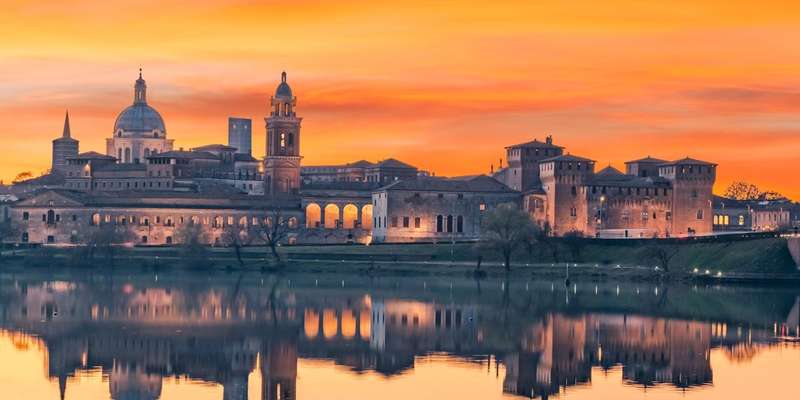- Home
- Useful Tips
- Mantua's most interesting...
Mantua, a UNESCO-listed Renaissance jewel, attracts travelers with its legendary Ducal Palace, yet few venture beyond to discover equally stunning but crowd-free alternatives. Over 70% of visitors spend less than two hours exploring Mantua's architectural treasures, missing secret frescoed halls and private courtyards where history feels palpably alive. The frustration of following packed tourist routes is compounded by limited signage at underrated sites, leaving many unaware they're walking past masterpieces by Giulio Romano and other luminaries. This oversight matters because these palaces hold the untold stories of Gonzaga court intrigues, revolutionary art techniques, and surprisingly affordable admission prices compared to their famous counterpart.


Why Palazzo Te delivers a more intimate Renaissance experience
Just a 15-minute walk from the crowded Ducal Palace, Palazzo Te offers revelatory moments without jostling for space. Built as Federico II Gonzaga's pleasure palace, its sprawling single-story layout lets you appreciate Giulio Romano's illusionistic frescoes at your own pace. The Sala dei Giganti alone warrants the visit – a 360-degree masterpiece where collapsing titans seem to tumble from walls onto viewers. Unlike the overwhelming scale of Mantua's main attraction, here you can study delicate stuccowork up close in the Camera di Amore e Psiche, where erotic mythological scenes unfold across vaulted ceilings. Morning visits before 11am reveal perfect light conditions for photographing the Loggia delle Muse's refined grotesques, a technique locals claim inspired later Vatican decorations. With tickets half the price of the Ducal complex and an on-site café in the former stables, this suburban retreat proves ideal for travelers craving artistic immersion over checklist tourism.
Palazzo San Sebastiano's overlooked military art collection
Few guidebooks mention this riverside palace, yet its Museo della Città houses Mantua's most intriguing blend of martial history and delicate artistry. Originally built to showcase Gonzaga military triumphs, the building now reveals how Renaissance rulers balanced war and culture. The ground floor's collection of tournament armor includes a rare child-sized suit commissioned for a 10-year-old heir, while upstairs galleries display exquisite miniature portraits soldiers carried into battle. A local curator's tip: the second-floor Sala degli Specchi (Hall of Mirrors) predates Versailles' famous version by nearly two centuries, its Byzantine-inspired mosaics creating dazzling light effects at sunset. Free admission on first Sundays makes this a budget-friendly alternative, though weekday mornings offer tranquil viewing of Mantegna-influenced friezes most visitors never see.
Finding Palazzo d'Arco's secret botanical garden
Tucked behind an unassuming neoclassical facade, this 18th-century noble residence surprises with one of northern Italy's oldest private gardens still in its original design. The palazzo's star attraction – the Sala dello Zodiaco's astrological fresco cycle – gets modest attention, but savvy visitors head straight to the rear courtyard where a gate leads to an enchanted green space. Here, medicinal herbs grow alongside 200-year-old magnolias, with information plaques detailing how the d'Arco family used these plants in Renaissance pharmacology. The garden's microclimate allows rare subtropical species to thrive, including a Chinese windmill palm planted in 1802. Arrive at opening time (10am) to join elderly Mantovani who come daily to stroll the boxwood labyrinths, or visit during April when wisteria tunnels burst into violet bloom – a spectacle unknown to most tourists rushing between major sites.
How to visit Palazzo Valenti Gonzaga's hidden music room
This aristocratic residence still owned by descendants of the Gonzaga dynasty offers what no state museum can – the chance to hear 16th-century acoustics in action. While the main floor's gilt stucco decorations rival the Ducal Palace's apartments, the real treasure lies upstairs in the Camerino della Musica. This walnut-paneled chamber was designed for private concerts, with wall carvings that amplify unamplified instruments perfectly. Through a local cultural association, visitors can book rare evening concerts (October-May) where Baroque music resonates exactly as composers intended. Daytime self-guided tours include the palace's overlooked gem – a rooftop loggia with panoramic views across Mantua's terracotta skyline. Pro tip: the ticket office sells combined passes with Palazzo Te, saving 20% compared to separate admissions while supporting preservation of these living historic spaces.



